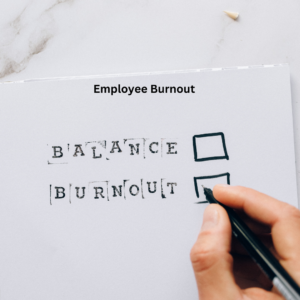
In manageable doses, stress can be a useful tool. But unrelenting stress can quickly become problematic. Over the last couple of years, there’s been a lot of coverage regarding the prevalence of workplace stress and its harmful effects. Because there is no clinical term for burnout, it can be difficult to quantify just how many in the workplace are experiencing it.
But it’s likely many are dealing with some level of burnout. Situations that were problematic during the pandemic did not disappear, nor did life magically right-side itself. Therefore, it must be acknowledged that work is different, and people are different and as a result, stress in the workplace will continue to increase.
Sides of Burnout
Understanding the triggers of stress and what constitutes manageable stress can help minimize the slide into burnout. Burnout is often thought of as overwork, but it can also result from feeling under challenged or neglected at work.
The latest Workforce Confidence survey from LinkedIn found four in ten workers in the U.S. report feeling stuck and burned out on the job. According to the survey, the rate of those experiencing burnout is higher among those who work as project managers and who work in healthcare and social services, according to the survey. This is believed to be because there is no resolution to the overwhelming element of workplace stress. Workers in consulting, real estate and business development are the least burned-out workers, out of a total of 26 job functions.
Who is Experiencing Burnout
- Onsite workers are more likely to burn out than hybrid or remote
- Employees in large corporations are more likely to burn out than those at smaller companies.
- Younger workers are also more likely to experience burnout than their older peers.
- Women are more likely to report burnout than their male colleagues.
Symptoms of Burnout
Symptoms include exhaustion, cynicism, a loss of connection to one’s work and/or pride/enjoyment felt in doing the work; and inefficacy, feeling incompetent or unable to reach or feel a prior level of satisfaction or productivity in one’s work. These feelings can also occur if an employee does not have the resources and/or support they need to complete their job duties. Additionally, these feelings are not the same for everyone, making it difficult to define if someone is feeling burnout or if it is something else. Symptoms can result in coronary heart disease, hypertension, sleep disturbances, depression, anxiety, and increased abuse of drugs and alcohol.
Overcoming/Managing Burnout
Until the issues causing the stress change, it’s unlikely symptoms will lessen, but good habits can help keep overwhelming burnout at bay when practiced regularly. These include consistent sleep habits, good nutrition, regular exercise, making and keeping positive social connections, a consistent meditation practice, and spending ample time in nature.
